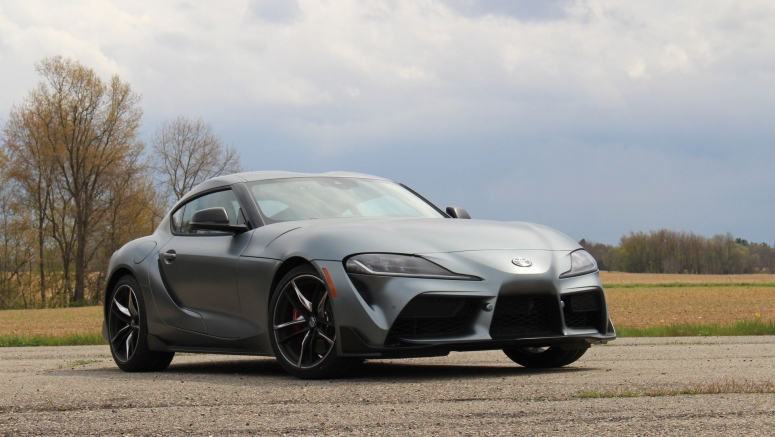2021 Toyota Gr Supra First Drive | What's New, 3.0 And 2.0driving Impressions

Welcome to 2020, where once again, the Toyota Supra is back. We hailed its return last year when we slid behind the wheel of the first new Supra sold here in the 21st century, and Toyota has gone and changed things up just one year later. Now, there are two Supras: a new, less powerful four-cylinder Supra that'll serve as a base model, and a more powerful version of the previous solo entry that showcases the type of incremental improvements Toyota says we should expect every model year. So, although owners of the 2020 Supra might be miffed by this news, there's a good chance 2021 owners will feel the same way in 12 months.
For now, though, the 3.0-liter turbocharged inline-six produces 382 horsepower and 368 pound-feet of torque, increases of 47 and 3, respectively, from the 2020 version. We weren't exactly begging for more power, but aren't going to complain, either. This is the same engine spec that's found in the M40i version of the Supra's sister car, the BMW Z4, which shares a common block and crank as the "lesser" version found in the 2020 Supra. However, it features a totally new head and exhaust manifold design along with new pistons and a reduced compression ratio from 11:1 to 10.2:1 to better handle the boost. Peak horsepower is made at 5,800 rpm now (it was previously 5,000), and carried on to the same 6,500 rpm — redline is 7,000 rpm. The torque band also shifts slightly higher in the rev range, as all 368 pound-feet are available from 1,800-5,000 rpm — in 2020 that range was 1,600-4,500 rpm. Theoretically, this should make the car happier in its mid- and upper-rpm ranges.
With all the extra power, Toyota has fettled with the chassis and re-tuned all the systems to match. One physical change is the added aluminum bracing. These braces go from the strut tower mounts to the radiator support, and Toyota says they’re meant to stiffen up the car's front end feel. The adaptive dampers were re-tuned along with the active differential, electric power steering and stability control. Without all of this, Toyota says the car would’ve felt more tail happy than it already is with the extra power.
And then there’s the new four-cylinder Supra 2.0. Not surprisingly, it too packs a BMW-designed and built engine, a 2.0-liter turbocharged inline-four good for 255 hp (5,000-6,500 rpm) and 295 lb-ft of torque (1,550-4,400 rpm). You’ll find the same four-cylinder in the Z4 sDrive 30i, where it makes the exact same power figures. Before you ask, it isn't available with a manual transmission, either, as a ZF eight-speed automatic once again does the shifting duties.
The drop in power is paired with a drop in weight and features, too. A Supra GR 2.0 weighs in at 3,181 pounds, which is about 200 pounds lighter than the inline-six car (3,400 pounds). Not all the weight loss is due to the smaller engine, though. Toyota swapped the heavier BMW-donated active differential for a traditional limited-slip differential, swapped to a fixed suspension instead of the adaptive one (springs and dampers are not shared with the 3.0), downsized the brakes, switched to manually-adjusted seats and downgraded the standard stereo from 10 speakers to four. Doing so wasn't entirely about achieving a lower price point, as Toyota says removing weight throughout the car as opposed to just over the front end helped retain the Supra's 50/50 weight distribution.



















